Seven Impossible Interviews
Before Breakfast #83: Chris Raschka
 August 26th, 2009 by jules
August 26th, 2009 by jules

Once upon a time, in reviewing author/illustrator Chris Raschka’s 2001 picture book title, Waffle, Publishers Weekly wrote that Raschka “captures the essence of a mood with the merest hint of text and the briefest of brush strokes.” This is one reason I’m such a fan of his work: His minimalist approach, that ability to say so much with one wild, graceful squiggle here and one loose dab of line there and unbridled, vigorous sweeps of color all over, all which add up to Raschka’s inimitable quirky style. “Quirky,” to be sure, gets over-used in the world of children’s lit and risks making the artist sound too precious, but Raschka’s quirky is far from precious or darling. His impressionistic style is unfettered (without overpowering the text, mind you) and leaps off the page with an infectious energy, affection, humor, and—most importantly—what comes across as a keen respect for the child reader.
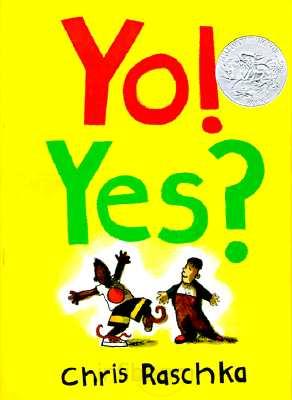 Raschka—not only a writer and artist, but also a musician—has written and/or illustrated more that forty-five books for children. He received the 2006 Caldecott Medal for Norton Juster’s The Hello, Goodbye Window (Hyperion); a Caldecott Honor in 1994 for his Yo! Yes? (Scholastic), an exploration of friendship in just thirty-four words through the “bold, original use of line and angle, color and space” (as determined by the Association for Library Service to Children); the UNICEF-Ezra Jack Keats Award; a handful of New York Times Best Illustrated Book of the Year accolades; and much more.
Raschka—not only a writer and artist, but also a musician—has written and/or illustrated more that forty-five books for children. He received the 2006 Caldecott Medal for Norton Juster’s The Hello, Goodbye Window (Hyperion); a Caldecott Honor in 1994 for his Yo! Yes? (Scholastic), an exploration of friendship in just thirty-four words through the “bold, original use of line and angle, color and space” (as determined by the Association for Library Service to Children); the UNICEF-Ezra Jack Keats Award; a handful of New York Times Best Illustrated Book of the Year accolades; and much more.
He’s also been no stranger to controversy, or—as Publishers Weekly put it in their review of his 1998 picture book title, Arlene Sardine— “Raschka is at it again, setting picture-book precedent…” (I like that better.) Chris got it on all sides for his picture book which follows a sardine and her short life (which, yes, ends in a can), and particularly for the line, “{h}ere, on the deck of the fishing boat, Arlene died.” But shoot, y’all. You know how I feel about books like this — and the fuss made over them. ‘Nuf said on that.
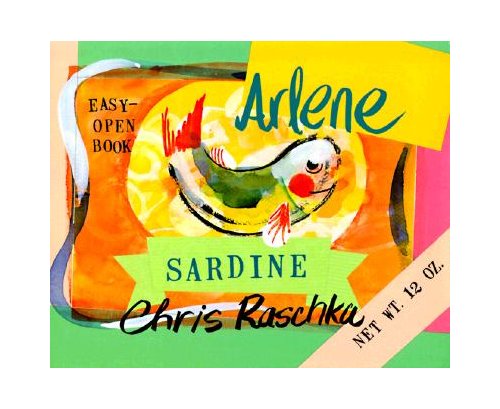
Since I’ve been a fan for many years, I thank Chris—who makes his home in New York—for cyber-hopping over to 7-Imp and taking the time to do this interview with me. I found it very fitting that someone I consider to be such a clear-eyed visual artist answered some of these questions, particularly toward the interview’s end, with images. Let’s get right to it . . .
7-Imp: You have illustrated for various age ranges (picture books; novels, such as Sharon Creech’s; and poetry anthologies). Can you briefly discuss the differences, if any, in illustrating for one age group to another?
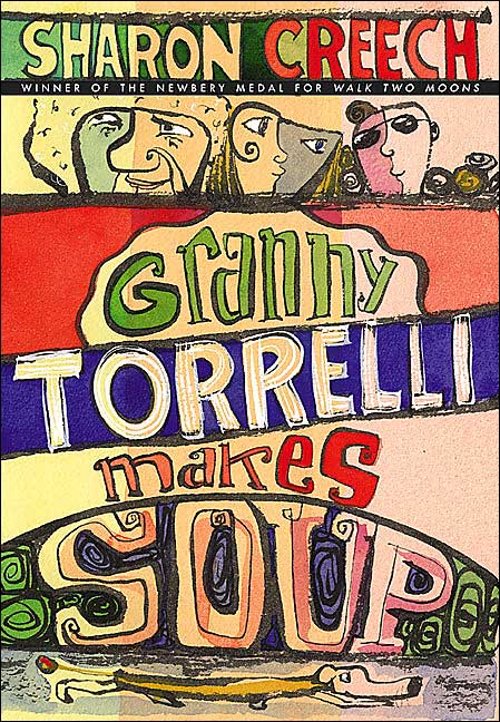
published by Joanna Cotler Books, 2003.
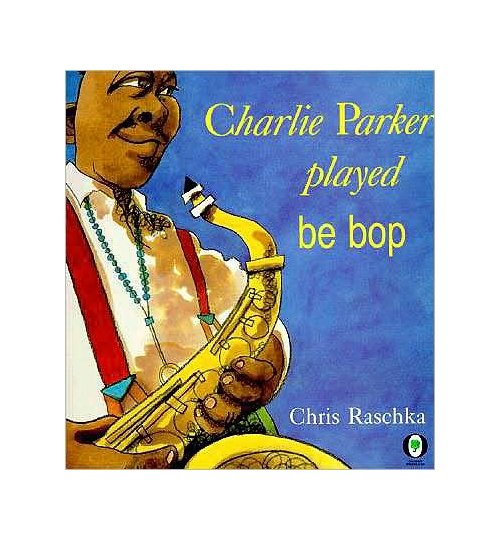
published by Orchard Books, 1992.
Chris: I’m not sure how to answer, because—while some of my work has clearly been for older readers, as in the Sharon Creech work—other work has started out to be for one age group and wound up being embraced by another. I’m thinking especially of my music books. For instance, I wrote Charlie Parker played be bop, thinking of nine-year-olds, and it has turned out to be more popular with two-year-olds. Or the other way, the biggest fans of Moosey Moose and Sluggy Slug, written for two-year-olds and three-year-olds, have since been embraced by some college juniors and seniors.
What have I learned from this? Well, let’s say that I try to paint in a manner primarily derived from the essence of the book as a whole, whatever that might mean to me. Somehow, the book itself will dictate the style. Who reads it afterwards is perhaps another question.
A Collection of Concrete Poems, published by Candlewick, 2001.
(Click images to enlarge.)
An Everyday Guide to Poetic Forms, published by Candlewick, 2005.
(Click images to enlarge.)
7-Imp: Do you find it more or less freeing to illustrate another person’s text, compared to the titles you’ve authored and illustrated yourself?
{Pictured here is the cover for Chris’ Mysterious Thelonius, published by Orchard Books, 1997.}
 Chris: The quick answer is that I have just as much trouble with my own texts as with anyone else’s. Which means my various editors have always given me as much freedom as I’ve asked for. There will always be details that will provoke comment, but overall, whether it’s my work or another’s, at the beginning I always do what I want. That said, in nearly every case I tend to do whole-scale revisions.
Chris: The quick answer is that I have just as much trouble with my own texts as with anyone else’s. Which means my various editors have always given me as much freedom as I’ve asked for. There will always be details that will provoke comment, but overall, whether it’s my work or another’s, at the beginning I always do what I want. That said, in nearly every case I tend to do whole-scale revisions.
This past Monday I delivered a complete set of final art for a new book. Ann, my art director, liked it very much. On Tuesday, I had second thoughts. On Tuesday afternoon, I saw Ann again, and when I said I wanted to do the whole thing over, she said “whatever” or words to that effect. Two hours ago, I cut all the paper to begin once more.
Four weeks later, and I’ve finished the book for a second time, so I can sit down to finish this answer.
(Click images to enlarge.)
7-Imp: It seems that all my very favorite children’s book illustrators, when asked who they have in mind when creating books, respond that they are not necessarily making the books with a child audience in mind. You have said your audience is children but that you consider them to be very much the same as adults. Has this always been the case when it comes to your perspective on your “audience,” or is that something you grew into as an illustrator as your work has evolved?
Chris: It is certainly something I’ve grown into (as is everything else involved in book-making). When I first entertained the notion of making books for children, I volunteered once a week at the American Museum of Natural History here in New York as an educator. I soon learned that the best way to engage my audience was to tailor the questions carefully — as in, when speaking to kindergartners standing before the grouping of African elephants, to ask—Are these animals in front of you big or little?
(Click each illustration to enlarge and see the complete spread, along with poems.)
7-Imp: I hate to ask about “inspiration,” since you probably get asked that a lot, but I’m going to anyway: Are there specific experiences that formed the basis of your artistic vision? Do you, say, remember childhood vividly, and does that inform your work? Does your love of—and experience with—music, very evident in many of your titles, inform your vision as well?
{Pictured below is the cover for Violet and Winston by Sonya Sones and Bennett Tramer, published by Dial Books in 2009.}
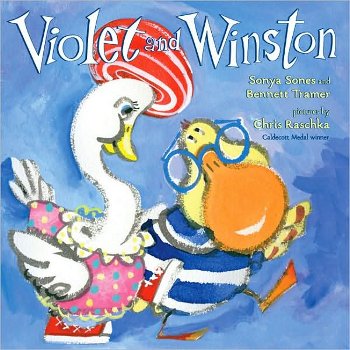 Chris: Inspiration comes to me in many forms. Physically, I get a little sick to my stomach, and then I think, I need this book, that is, I need to make this book, and when, as was recently the case, it’s a book about the jazz musician Sun Ra, then I know I’m in trouble, because—after having dedicated a month or two of happy work on a hand-made vision of this book—I will discover that no one in their right publishing minds will care to publish a book about Sun Ra. In another instance, I was sightseeing in the Church of San Giovanni in Lateran and marveling at the glorious art which surrounded me, and I got that queasy feeling, and I thought, I want a book about how to read a church — with useful tips on how to spot saints. You should see the cross-eyed looks this book has evoked in my editors. The book is done. It just probably will never see the light of day. The book I mentioned earlier, Little Black Crow, on the other hand, came to me in much the same way. It’s about a little crow and my own wondering about where it has gone. I got that feeling, wrote a little text, drew some pictures over and over, and now—I think—it’s done.
Chris: Inspiration comes to me in many forms. Physically, I get a little sick to my stomach, and then I think, I need this book, that is, I need to make this book, and when, as was recently the case, it’s a book about the jazz musician Sun Ra, then I know I’m in trouble, because—after having dedicated a month or two of happy work on a hand-made vision of this book—I will discover that no one in their right publishing minds will care to publish a book about Sun Ra. In another instance, I was sightseeing in the Church of San Giovanni in Lateran and marveling at the glorious art which surrounded me, and I got that queasy feeling, and I thought, I want a book about how to read a church — with useful tips on how to spot saints. You should see the cross-eyed looks this book has evoked in my editors. The book is done. It just probably will never see the light of day. The book I mentioned earlier, Little Black Crow, on the other hand, came to me in much the same way. It’s about a little crow and my own wondering about where it has gone. I got that feeling, wrote a little text, drew some pictures over and over, and now—I think—it’s done.
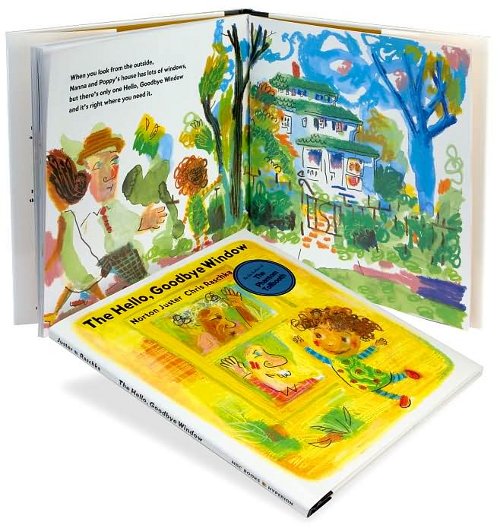
the 2006 Caldecott Medal Winner, published by Hyperion, 2005.
7-Imp: On a related note, your art work has a very distinct rhythm, if you will, to it (depending on the title, but I think that overall you have a sort of signature organic rhythm, if that makes any sense). This might seem like a silly question, but I’m curious to know if you listen to music while you work.
(Click images to enlarge.)
Chris: Another good question, because in the first (which was really about the fourth) rendition of Little Black Crow, I worked in a quiet studio—the radio was off—in an attempt at better concentration. My concentration proved to be good, but perhaps too good, in that I had trouble turning off my critical mind, i.e. as soon as the work was complete on a given day, I thought it was awful. Turning the music back on perhaps allowed me to go with flow of the day, at the end of which I can just shrug and say to myself that it’s what happened to happen today, we’ll see if we like it tomorrow. Without the music, I found I was too present. I still aspire to working without music, and I hope I can get comfortable enough with myself that someday I’ll manage it.
What kind of music? I do not listen to what we like to call classical music—though this is the music in which I have the most training and feel very close to—because I find it demands too much of my critical attention. I listen to, broadly speaking, popular music—Sun Ra, for instance, The Lucksmiths, Biz Markie, Kirsty MacColl, Noël Coward, Television, Drink Me, Charlie Parker, and WFMU.
I Pledge Allegiance, published by Candlewick, 2002.
(Click images to enlarge.)
7-Imp: Can you tell me briefly about your road to publication?
Chris: I published my first book with a small publisher, Brethren Press, a small book about the Russian and English alphabets and peace; moved to New York; started to experiment with other ideas, which I showed to a couple of editors here; and then had the good fortune of having a friend say to me that I should send my book dummy (Charlie Parker played be bop) to Richard Jackson, because he seemed to like weird books. As it turned out, he does like weird books and published Charlie Parker played be bop, my first for a major publisher, and is publishing my latest, Little Black Crow.
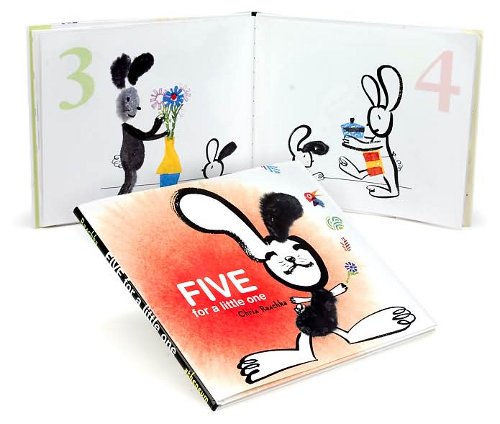
7-Imp: What exactly is your process when you are illustrating a book? You can start wherever you’d like when answering: getting initial ideas, starting to illustrate, or even what it’s like under deadline, etc. Do you outline a great deal of the book before you illustrate or just let your muse lead you on and see where you end up?
Chris: I get that funny feeling in my stomach, I write down the idea, and then I make many book dummies of the book itself. I consider the book to be the form, if you will—not the pictures, not the words, but the book itself—so I really need to feel it and see it, because this will impinge on the words, which will impinge on the pictures, and vice versa. When I work on either of these two elements in isolation, I tend to get into trouble. Even if the text will ultimately be set—that is, typeset as opposed to hand-drawn—I need to feel it on the page before I can paint adequately. And even then it often goes kabloowy.
Click each image to enlarge:
7-Imp: I think this question is rather related to process: I am always so impressed by how you can take a simple, economical line or dab of color or basic geometrical form and convey such emotion, energy, and spontaneity. Does this dynamic come easy to you, or do your compositions, by chance, start out more cluttered and you have to reign yourself in from keeping things too crowded and deliberate?
Chris: {Ed. Note: Chris is using the following images to answer these “questions of abstraction.” The art—from first sketches to final art—is from Happy to Be Nappy by Bell Hooks, Hyperion, 1999. Click each image to enlarge}:
clicked to enlarge.}
7-Imp: Do you have a favorite medium in which to work?
Chris:
7-Imp: Describe your studio or usual work space for us.
Chris:
7-Imp: Do you do school visits? If so, what are they like?
Chris: Puppet shows and more!
7-Imp: Do you teach illustration? If so, how does that influence your work as an illustrator?
Chris: I have taught, but not illustration per se. I taught general art to senior citizens on St. Croix in the V. I. We met in an old thick-walled fort, with the trade winds blowing through the heavily-barred windows. I taught my students how to draw on the right side of their brains; they told me ghost stories about the island. And I gave private drawing lessons to a wealthy rug merchant in Manhattan. Beautiful rugs. Not such great drawings.
 7-Imp: As a book lover, it interests me: What books or authors and/or illustrators influenced you as an early reader?
7-Imp: As a book lover, it interests me: What books or authors and/or illustrators influenced you as an early reader?
Chris: I liked Ludwig Bemelmans’ paintings very much; I found them delicious. I was drawn to Dr. Suess, but I didn’t completely trust him. I liked him, but he worried me. I recall the very first time I saw Where the Wild Things Are: It was on my friend Keith’s kitchen table; there was, right away, something mysterious and nearly exotic about the book. Later, Charles Schulz was probably most important to me.
7-Imp: If you could have three (living) illustrators or author/illustrators—whom you have not yet met—over for coffee or a glass of rich, red wine, whom would you choose?
Chris: Quentin Blake, John Burningham, Tamiji Kitagawa:
7-Imp: What’s one thing that most people don’t know about you?
Chris: I pay attention to book sales:
7-Imp: What’s next? Any new titles/projects you might be working on now that you can tell us about?
Chris: Little Black Crow {click image to enlarge}…
{and} Daisy’s Ball {click image to enlarge}:
7-Imp: Is there something you wish interviewers would ask you — but never do? Feel free to ask and respond here.
Chris: How do you plan your year?
7-Imp: What is your favorite word?
Chris:

7-Imp: What is your least favorite word?
Chris:

7-Imp: What turns you on creatively, spiritually or emotionally?
Chris:
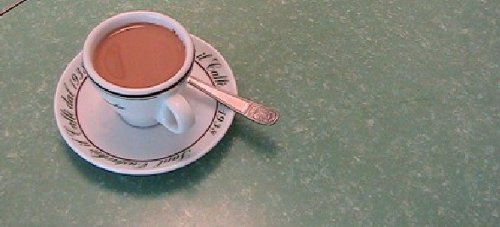
7-Imp: What turns you off?
Chris:

7-Imp: What is your favorite curse word? (optional)
Chris:

7-Imp: What sound or noise do you love?
Chris:
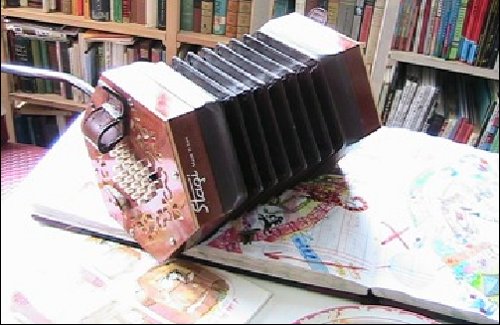
7-Imp: What sound or noise do you hate?
Chris:
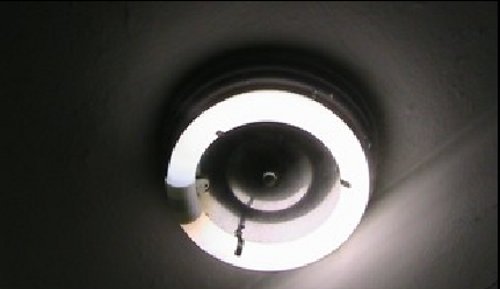
7-Imp: What profession other than your own would you like to attempt?
Chris:

7-Imp: What profession would you not like to do?
Chris:
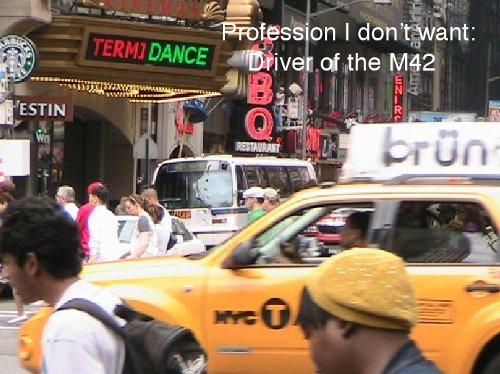
Opening photo, all photos of sketches and early art, photo of studio, Pivot photos, and just about everything else (except book covers and what’s below) courtesy of Chris Raschka. All rights reserved.
A POKE IN THE I. Collection Copyright © 2001 by Paul B. Janeczko. Illustrations Copyright © 2001 by Chris Raschka. Reproduced by permission of the publisher, Candlewick Press, Somerville, MA.
A KICK IN THE HEAD. Collection Copyright © 2005 by Paul B. Janeczko. Illustrations Copyright © 2005 by Chris Raschka. Reproduced by permission of the publisher, Candlewick Press, Somerville, MA.
A CHILD’S CHRISTMAS IN WALES. Text Copyright © 1954 by New Directions. Illustrations Copyright © 2004 by Chris Raschka. Reproduced by permission of the publisher, Candlewick Press, Somerville, MA.
A FOOT IN THE MOUTH. This collection copyright © 2009 by Paul B. Janeczko. Illustrations copyright © 2009 by Chris Raschka. Reproduced by permission of the publisher, Candlewick Press, Somerville, MA.
THE GRASSHOPPER’S SONG. Text copyright © 2008 by Nikki Giovanni. Illustrations copyright © 2008 by Chris Raschka. Reproduced by permission of the publisher, Candlewick Press, Somerville, MA.
I PLEDGE ALLEGIANCE. Text copyright © 2002 by Bill Martin Jr. & Michael Sampson. Illustrations copyright © 2002 by Chris Raschka. Reproduced by permission of the publisher, Candlewick Press, Somerville, MA.
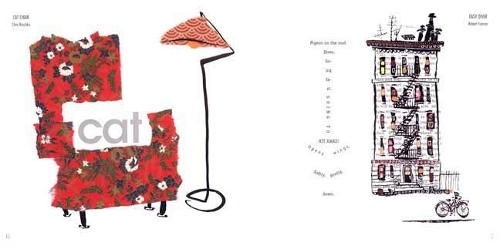
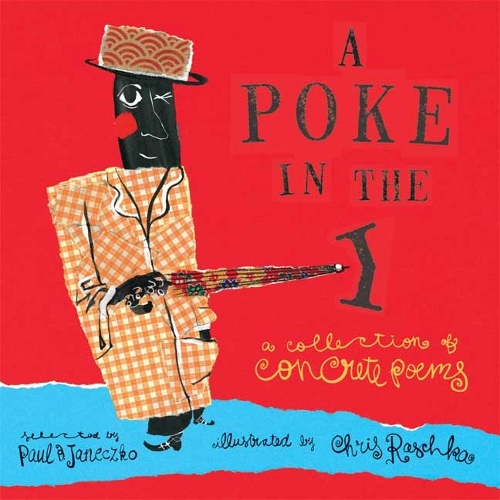
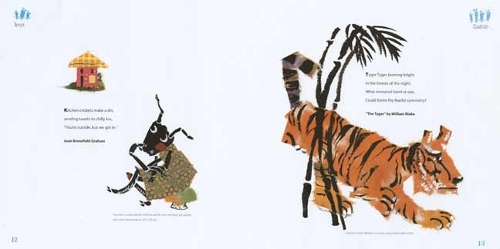
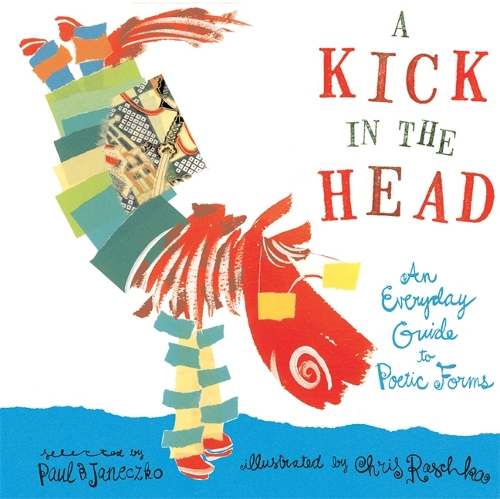
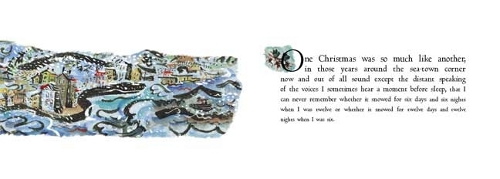
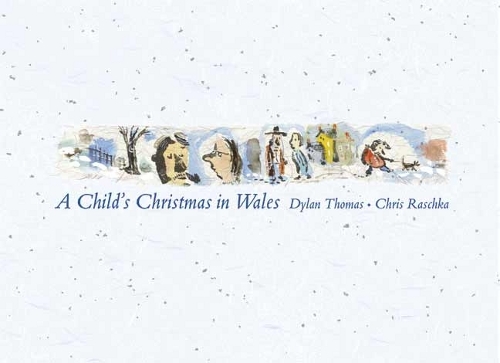
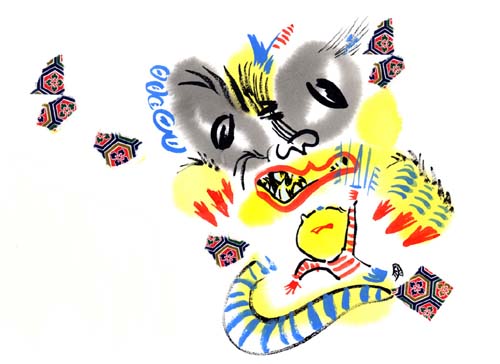
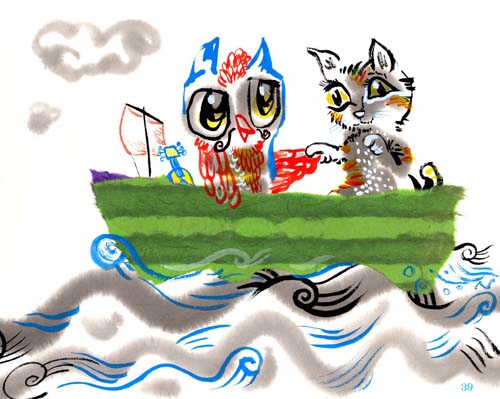
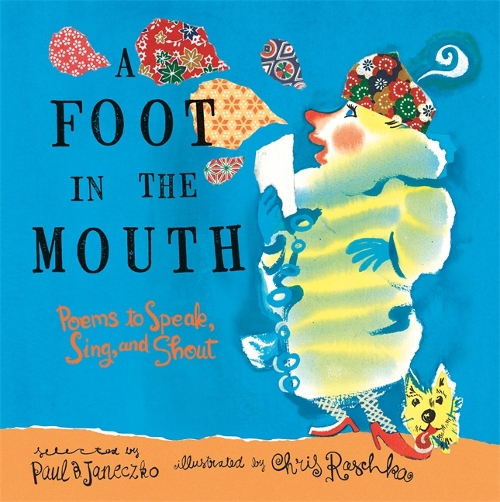
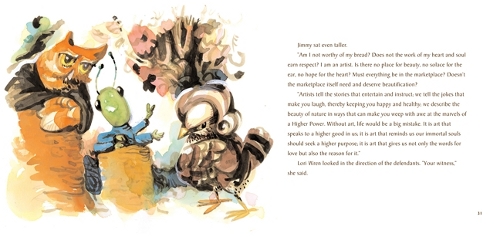
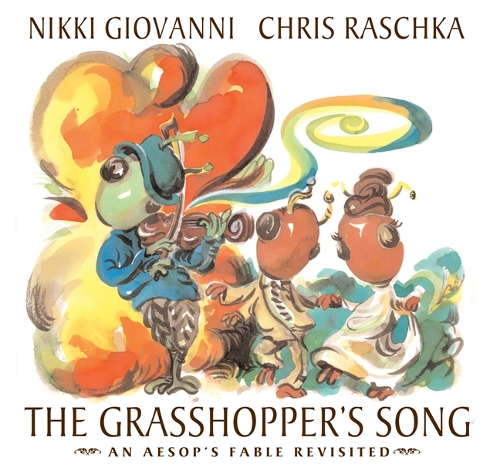
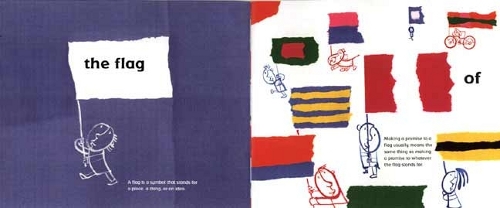
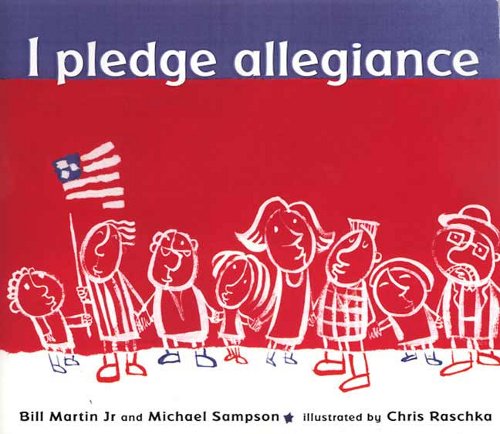
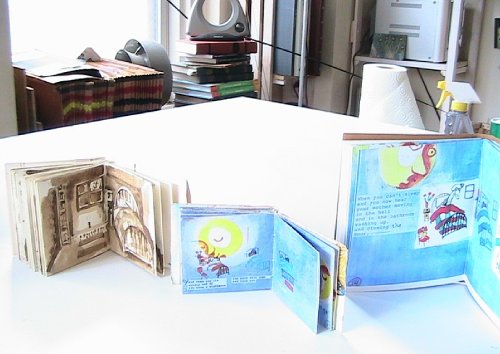
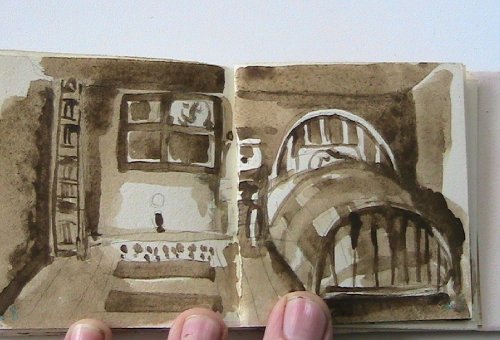
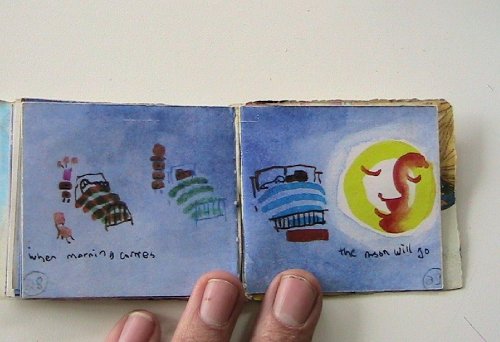
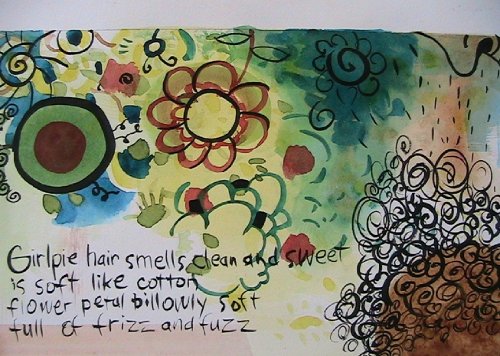

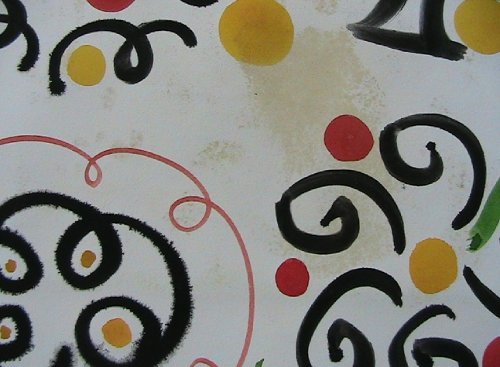
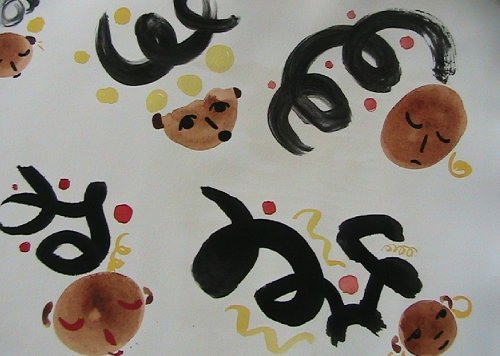
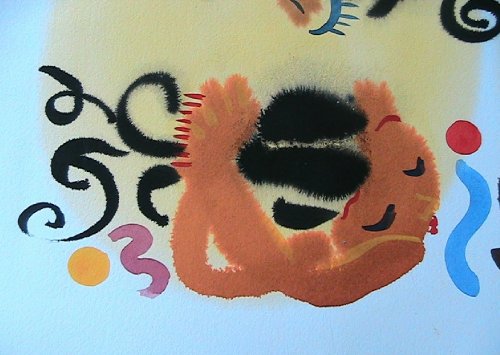
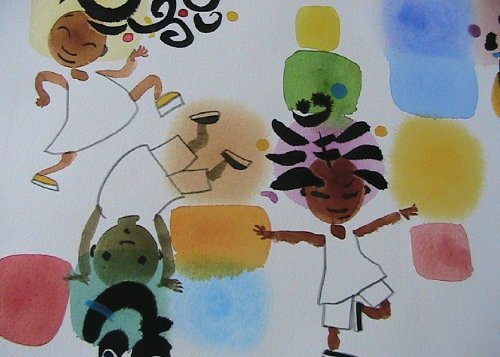
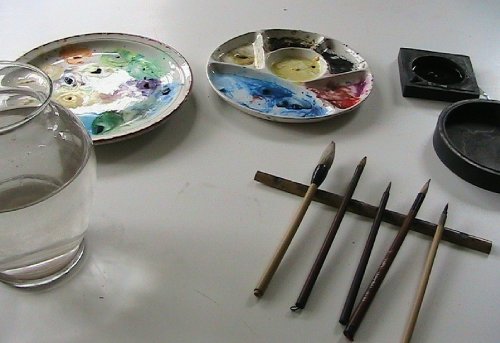

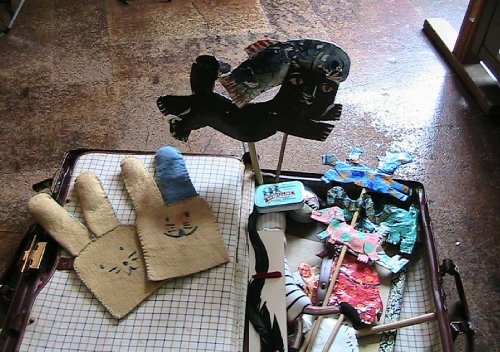
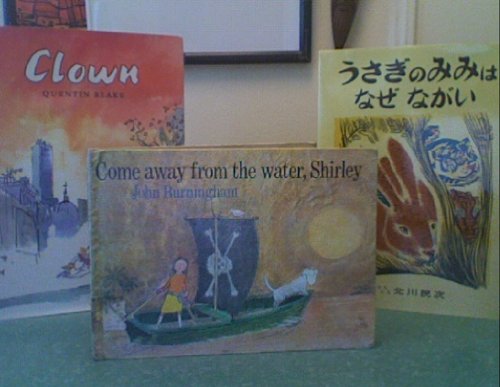
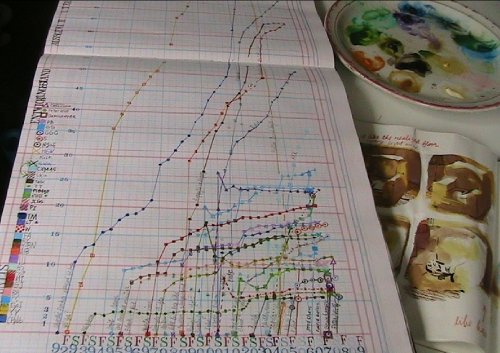
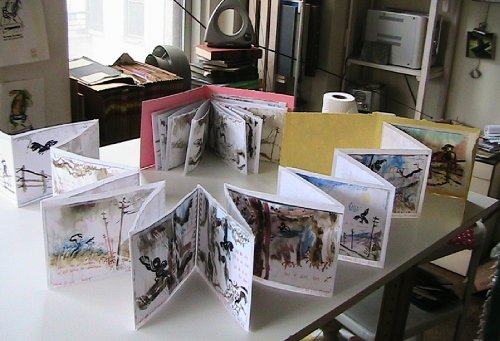
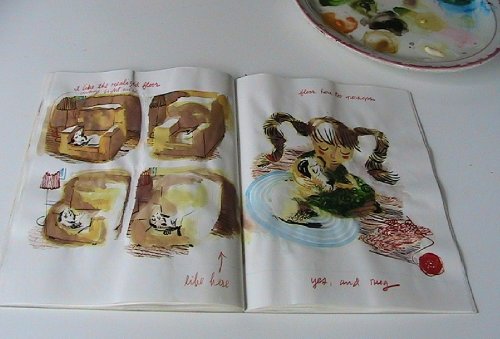
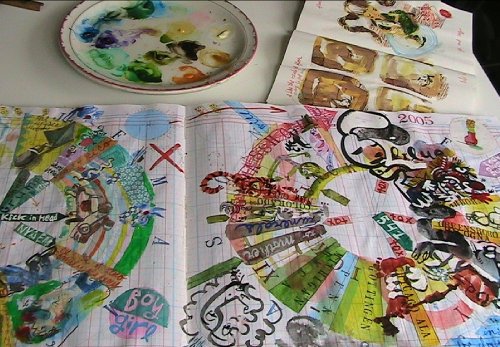

Oh my gosh, there’s a picture of ssshhh… *bursts out laughing*
Oh man, this is great. Chris is one of my favorite artists, period. Big influence on me when I was going to college and my wife bought “Charlie Parker Played Be-Bop” for the kids she was teaching creative movement to. In fact, the following day, when Andrea asked if anyone remembered who the book was about she had read the previous day, one little boy popped up and answered “Parlie Charker!”
I had the wonderful opportunity to meet Chris Raschka several years ago in Decatur, GA for the book festival there and shared with him some of the sketches from my moleskine. It was a great moment for me.
Thank you so much, Chris, for sharing with us your thoughts, insights, and techniques here on 7-Imp. What a great interview! Many many thanks.
[…] creator, Chris Raschka, and so was completely delighted to see the delightful interview he gave over at Seven Impossible Things Before Breakfast. This reminded me of the ways I’ve used his books in our weekly Literary Salons when the […]
LOVE this interview.
One of my favorite illos here is the one for “Jabberwocky,” because it completely reimagines the hideous beast. Tenniel’s original is wonderful but, dang, it’s literal. And because it was the original, it’s influenced almost every one that’s followed. Here, Chris Raschka has taken the beamish boy as the focus, and the Jabberwock itself is a spontaneously created creature of the kid’s imagination: eyes, teeth, claws, and tail completely surrounding him while he whirls, sword in hand… I can’t speak for everyone who was ever a boy, but I think that’s exactly how my mind worked in imaginary fights with monsters and supervillains.
The book-sales chart is fascinating and a little disturbing. And the calendar is aMAZing. (I wonder if he does each year’s/month’s artwork all at once, or adds to it as the year goes by? Also I like the forceful way he views the year as a wheel — in my mind, I think I see it as a square (one season per side) with rounded corners.)
Favorite curse word: I suspect you (Jules) might have been tied up in a knot about that one. But really — LOL! (You should consider letting every interviewee answer that question with artwork. It’ll probably confound the bejeezus out of Google Images’ indexing system.)
Oh, P.S.: the reading-a-church book sounds fabulous to me. (I’d also love to be able to read other buildings, like stadiums, barns, and the Mall of America — which I’ve never been in but always imagine like Disneyworld, with rides and shows and a whole section — built around a lake — of stores which sell only stuff from other countries.)
Fantastic interview! Loved the stories about the weird books he wanted to write that no publisher would probably ever publish. Makes my own pile of those feel less lonely.
Also, I adored the image answers (though I can’t tell what noise he hates), the book sales chart (oh, to have enough books to need that chart), and that fantastic calendar! Wonderful!
I saw Chris present at IRA in Mpls this year, along with Paul Janeczko, about Foot in the Mouth. Chris’ talk about his process was fascinating–a real treat. And so is this interview.
I love the sound of Chris’s church book, and I think there’s an audience for that–Catholic families, certainly, and families who are traveling to places where they will visit churches. Also, children find this sort of thing inherently fascinating. We have a book series at the library that’s about different places of worship, and they circulate very well. Anyway, in case his editor’s paying attention.
Laura, I believe it is the horrid buzzing of the fluorescent lights that he dislikes. *I* certainly dislike that sound, much as I live with it, working in a library and all.
Thanks, all, for coming to visit.
Ward, I sure would love to see a creative-movement teacher using Charlie Parker played be bop with children. And I was just telling Monica I’d like to read Arlene Sardine to a group of children one day, too. I’ve never done that. Of course, it occurs to me I’ve never read it to my girls, but they’re used to books like that.
John, Raschka’s vision of the Jabberwock blows me away, too. That is one of my favorite illustrations of ’09. And curse-word note taken: Yes, it would be very fun to see folks answer that question with artwork. And all those Pivot questions, too.
Laura, yes, I think Adrienne nailed it. The fluorescent lights-sound makes me crazy, too, and I think that’s what he is referring to. So glad you got to see both Raschka and Janeczko at IRA.
Adrienne and John, I’d like to see that how-to-read-a-church/the saints book, too. Of course, I think I’d read the phone book if he illustrated it…but I particularly like that read-a-church idea.
Oh yes, I love the word shoe too!
Fun, surprising, amazing interview. Great questions, Jules :). Image answers were brilliant. *mouth still hanging open after seeing the sales chart and calendar*
His art just makes me so happy. Nice to learn he’s a lovely person as well. Thanks Jules- beautiful profile as always.
(happy sigh)
I enjoyed this interview. I would really like read the book that Raschka did about how to “read” a church and spot saints. –Farida
ha! Love the visual interview responses. And as always, the workspace and in-process bits are my fave…great stuff.
wow, this really is a great interview! Love it when someone breaks out of the box a little, or a lot.
[…] Interview with Chris Raschka Seven Impossible Things Before Breakfast […]
Whoa. Do I love this. It is so fascinating to me as a word person to see questions answered with images. And how about turning in all the art for a book and then changing your mind and starting over??? WHOA!
Oh, please publish a book on Sun Ra! It would be a hit in my house with my 6 year old (and his parents). Great interview.
Out of all the things to love in this post, I especially love that graph.
What a brilliant interview and interviewee. Chris is a true genius. My favorite art of his–and this is biased, of course–is what he did for FISHING IN THE AIR. He was able to visually render the ‘action’ of the imagination.
Magic! Thanks.
We had Chris for an Author Visit at Denver Public Library 2 years ago and he was as delightful and charming as this interview and his books. We LOVE him!!!
I don’t know how I missed this interview before, but it’s wonderful! Chris Raschka is an absolute favorite. Thanks for sharing.
[…] some cartoony, depending on my mood, and I like minimalism done well. Sometimes my mood is very Rashcka; other days, very Kadir. Some days, it’s gotta be detailed, ornate Barbara McClintock or […]
[…] out. But my kicks are all wrapped up in that. I got to see good friends and former colleagues, meet Chris Raschka, briefly catch up with Jack Gantos and hear him speak again, create a secret handshake with my […]
[…] much about the book from which they come, Fortune Cookies by Albert Bitterman and illustrated by Chris Raschka: 1) The Cybils Award winners were just announced (as I type this on Monday), so I’m going to […]
[…] first children’s book, A Primer About the Flag (Candlewick, March 2011), illustrated by Chris Raschka. (Again, to read more about the books, head to last week’s […]
[…] for Daisy; b) as I’ve already made clear numerous times here at the blog (most notably in my 2009 interview with him, but also note this post’s title), I’m a raging fan of Raschka’s […]
[…] now, though, a short and sweet post. I just realized that when Chris Raschka visited in 2009, he shared an early image from A Ball for Daisy, which picked up today’s Caldecott Award. […]
Do you make author’s visits – Our school district is on Long Island. Thanks – Jacquie Galano Librarian
[…] to say the least. But today is a “first” for 7-Imp. Unless you count the photographs Chris Raschka used to answer some of his questions or Deborah Freedman’s illustrated responses to the Pivot […]
I’m intrigued to know whether Raschka was influenced by Paul Klee’s artwork for Mysterious Thelenious, he’s clearly using his counterpoint technique there. Would anyone be able to forward that question to him at all?
[…] Seven Impossible Things Before Breakfast Interview with Chris Rashka […]
[…] This profile of Caldecott winner Chris Raschka is exceptionally good, as well as this of Newbery winner Jack […]
[…] Don’t miss the conversation Travis Jonker hosted between Caldecott winners Chris Raschka and Erin E. […]
[…] morning at Kirkus, I share my thoughts on Chris Raschka’s latest picture book, Everyone Can Learn to Ride a […]
[…] from two books I wrote about at Kirkus last week. So, my thoughts about the books—Chris Raschka’s Everyone Can Learn to Ride a Bicycle (Schwartz & Wade, April 2013) and Kashmira Sheth’s […]
[…] as you can see in the art featured here today, is a cousin in style to the illustrations of Chris Raschka—is as emotionally resonant as the text. In one striking spread, we see the boy seated in […]
[…] Chris Raschka’s Lamby Lamb (April 2014)(Click to […]
[…] Chris Raschka: “I like the snail. You may find her (or him) a little ugly — too squishy. But all her life she works at her craft, adding to it day by day until, when she dies,she leaves us something of great beauty.”(Click to enlarge) […]
[…] This morning over at Kirkus, I write about Chris Raschka’s new picture book biography, The Cosmobiography of Sun Ra: The Sound of Joy Is Enlightening […]
[…] week, I wrote about Chris Raschka’s new picture book biography, The Cosmobiography of Sun Ra: The Sound of Joy Is Enlightening […]
[…] over at Kirkus I talk to poet Paul B. Janeczko, whose newest collaboration with illustrator Chris Raschka, The Death of the Hat: A Brief History of Poetry in 50 Objects, marks his 50th […]
[…] Death of the Hat: A Brief History of Poetry in 50 Objects (Candlewick, March 2015), illustrated by Chris Raschka. So today I am following up with two spreads from the […]
[…] later about Vera B. Williams’s Home at Last (Greenwillow, September 2016), illustrated by Chris Raschka. But today I have art […]
[…] and much of the night.” It’s a pleasure to share some thoughts and images from Chris Raschka today. Just this month, Greenwillow Books released Home at Last, written by Vera B. Williams and […]
[…] he was visiting Scotland, and now it’s in picture-book form, illustrated by the one, the only Chris Raschka. (Ezra Jack Keats also illustrated this back in ’65 as The Naughty Boy, published by Viking […]